If you have attended any of my classes, you’ll know that I praise Wyze for their innovative products, and especially for their prices. So a while back, I wrote this post about the amazing $20 WyzeCam V2 camera. Now the V2 has been replaced with the V3 which is better, and as is Wyze’s tradition, is the same price, $20. But that’s not why I’m writing this post. Today, I want to tell you about one of WyzeCam’s features which is ‘Time Lapse’ photography. I have been playing with this feature during the last several weeks and want to share some of my results with you.
So, what is ‘Time Lapse’ photography. Time Lapse photography is ‘a technique whereby the frequency at which film frames are captured (the frame rate) is much more spread out than the frequency used to view the sequence. When played at normal speed, time appears to be moving faster and thus lapsing.’ (source)
The WyzeCam cameras include this feature, which you can control via the Wyze app on your smartphone. Below are the steps one would follow to enable this feature:
- In the Wyze app on your smartphone, view specific Wyze Cam camera you want to use for your Time Lapse sequence
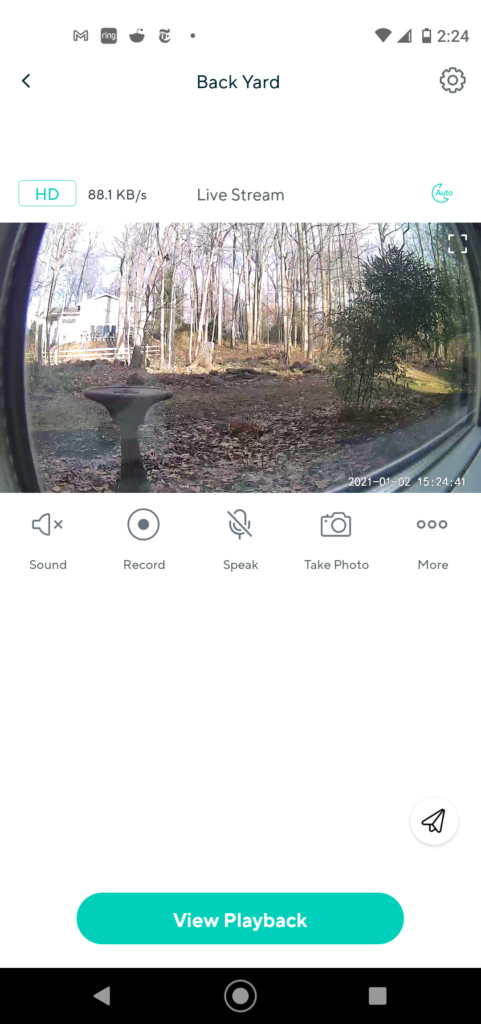
2. Select the 3 dots to the lower right below the image
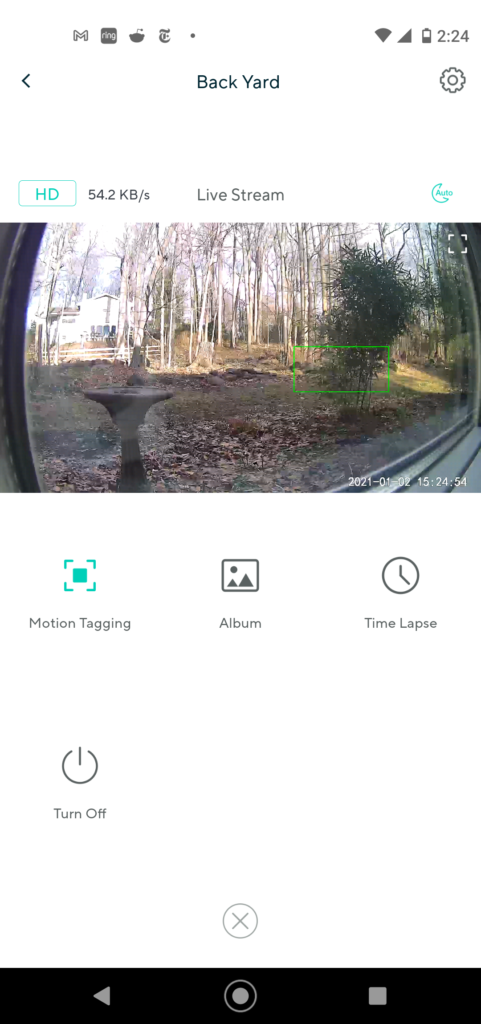
3. Select ‘Time Lapse’
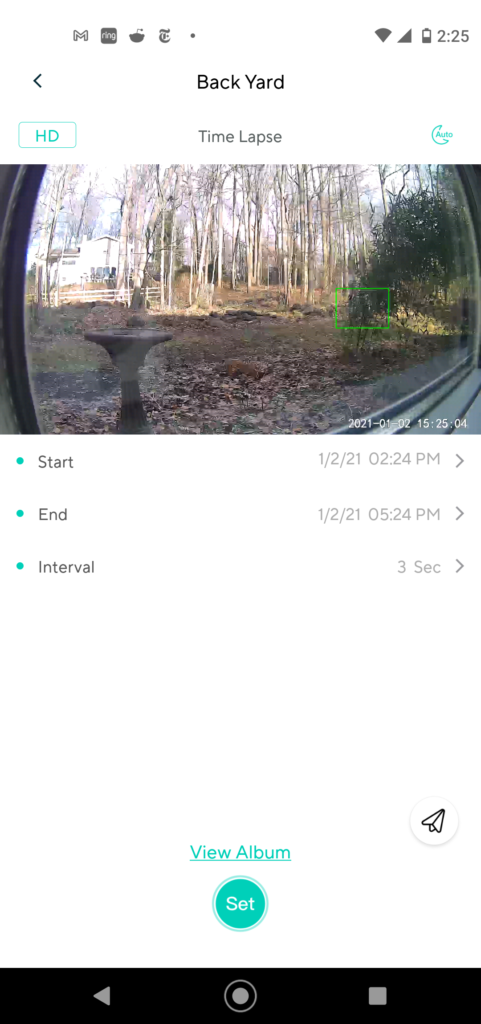
4. Select and set ‘Start’, ‘End’, and ‘Interval’ times
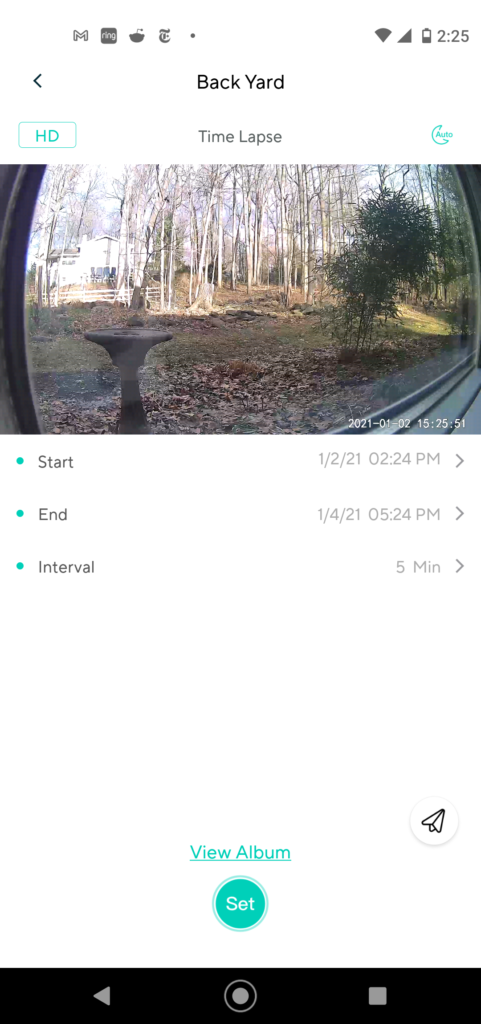
5. Frame the image you’re interested in photographing and make sure there’s a consistent light source it that’s important for your scene. then select ‘Set’. That’s all there is to it. You’ll see a green square at the bottom of the screen which you’ll press when you want to stop the sequence, or the sequence will terminate when the ‘End’ date and time has been reached.
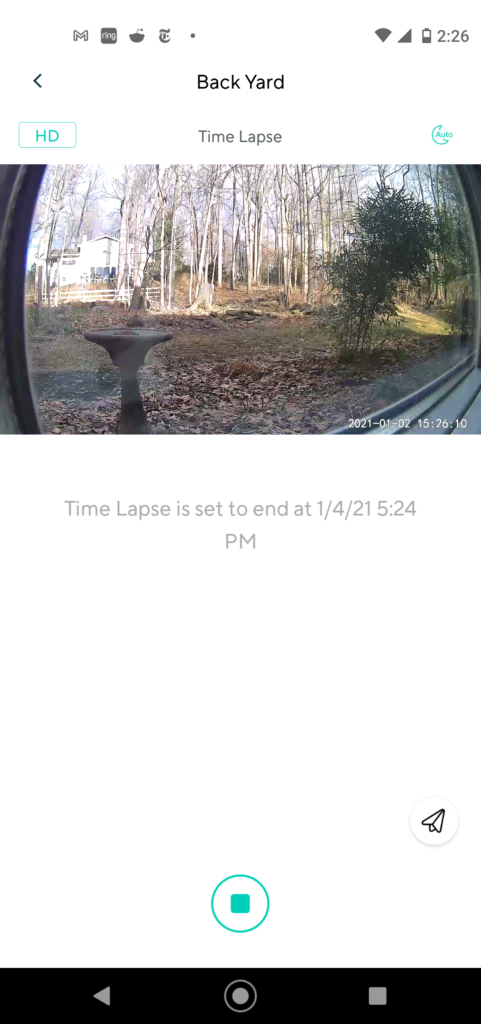
When the sequence completes, it will take a little while for it to appear since it takes time to render. After that, go into the ‘Album’ for that camera (using the icon next to the Time Lapse icon) then download or email the results to yourself for editing.
Below are two examples of recent Time Lapse sequences I captured, one for our Christmas Cactus, and another for my Mom’s Orchid. To add a bit of a professional touch to each, I edited the sequences in the OpenShot Video Editor and added some music*. Here are the results for your enjoyment:
*Note: You’ll probably recognize the music from ‘2001: A Space Odyssey‘ The music seemed fitting, but I’m using the music without the permission from the copyright owner. And is that OK? Well sort of. As soon as I posted the video I received a ‘Copyright Claim’. YouTube describes a Copyright Claim as follows: Content ID claims usually mean we found content on your YouTube channel that someone else owns. Copyright owners are the ones who decide whether other people can reuse their copyrighted content. They often allow their content to be used in YouTube videos in exchange for having ads run on those videos.
YouTube also made it clear that this was a Copyright Claim, and NOT a Copyright Strike. So what’s the difference? A copyright strike means that a copyright owner submitted a complete and valid legal takedown request for using their copyright-protected content. When we get this type of formal notification, YouTube takes down your video to comply with copyright law.
And another:
2nd Orchid blooming – to Maurice Ravel: Bolero / Gustavo Dudamel conducts the Wiener Philharmoniker at Lucerne Festival 2010
Amaryllis blooming – W.A.Mozart Flute Concerto No.2 in D Major , K.314 -Yeojin Han
Let It Snow – Frank Sinatra – Let It Snow, Let It Snow, Let It Snow [Christmas Songs Classics]
Second Snow Day – The Best Of Ray Lynch – The Orchard Music (on behalf of Ray Lynch Productions); BMI – Broadcast Music Inc.)
Lateset Snow Day – The Flight of the Bumblebee – La Monnaie De Munt
Latest Copyright Claim notification:
A copyright owner using Content ID has claimed some material in your video.
As a result, your video has been blocked in some countries. This means that your video is still up on YouTube, but people in some countries may not be able to watch it.
This is not a copyright strike. This claim does not affect your account status.
Video title: Latest Snow Storm Time Lapse
Copyrighted content: Rimsky-Korsakov: The Tale of Tsar Saltan, Act 3: Flight of the Bumble-Bee
Claimed by: WMG
Blocked countries: Cuba, Iran, North Korea, Syria
Why this can happen
- Your video might contain copyrighted content.
- Copyright owners can choose to block YouTube videos that contain their content.
If this copyright claim is valid
- You don’t need to take any action or delete your video.
How to unblock your video
- If something went wrong and the copyright owner or our system made a mistake, we have a dispute process. Please only use it if you’re confident you have the rights to use all the content in your video. Learn more
- You can also remove the claimed content using Studio’s editing tools.
View optionsNeed copyright-safe songs?
When choosing music for your next video, you can avoid copyright-related issues by picking a song from the YouTube Audio Library. We’re adding new tracks all the time!
– The YouTube Team
**
Update:
Just saw this response on Quora and thought it might be useful for those considering posting ‘somebody elses’ work (music, video, etc.) on YouTube:
David Swisher, Video editor & producer; YouTuber since 2007; trainer in & digital media law Updated January 31, 2019
Posting to YouTube, even if the audience is intentionally kept small, is still a form of distribution, and that’s what copyright deals with.
I have quite a few videos that have received copyright flags (“matched content notifications,” not strikes) even though they’re unlisted (or occasionally private). I’m a higher education online learning systems administrator and all of those examples of mine are ones where we either have written permission or a license to use it from the copyright owner or which fall well within the purview of the T.E.A.C.H. Act, but YouTube’s ContentID algorithm doesn’t have a way to know that. So the system flags it as having “matching content,” applies the verified rights owner’s resolution procedure (strip audio, monetize, block video, etc.), and notifies the video’s uploader. Every few months I have to respond to such notices by clarifying the permission or license we have in order to release the copyright restriction’s action.
To clarify two parameters, though:
- You asked specifically about copyright “strikes” on YouTube. Those only occur when a verified rights owner submits a complete legal takedown request under the D.M.C.A. (which results in the video’s removal) OR when you violate a community guideline related to copyright. And even if you get those, you can file a counter-notification if you do indeed have permission or have a legitimate basis to challenge the strike.[1]
- What’s far more likely to occur is a “matched content” notification. Since the verified rights owner is notified on those, it could trigger a copyright strike (if they decide to issue a DMCA takedown notice rather than just employ a more basic remedy), but if you do legitimately have permission to use the content (and can document that promptly), that can help avoid it becoming a copyright strike.
- The fact that you’ve made it unlisted or private and aren’t trying to share or monetize it should work in your favor if/when you have to respond to a matched content notification or file a counter-notification on a strike – after all, that involves at least 1 (potentially 2) of the 4 criteria which form the basis for Fair Use.[2] It’s much harder to argue “fair use” if you’re monetizing it or have it up publicly where anyone can find it (plus, the view counts will also typically be small if it’s private or unlisted, which can also help with the 4th factor).
If it’s not content you wholly own or produced solely by yourself, eventually the ContentID system will find it and flag it. Several years ago, YouTube was scanning 100’s of thousands of hours of previously-uploaded content daily, and they were quite backlogged, so it often took months before infringing content was found. These days, they’ve caught up and their ContentID algorithm is vastly improved, so they typically detect infringing content within minutes (or at most, within days). But even content that has been there for years can receive matched content notifications later as other rights owners and their content get added to the repository.
Here’s quite a bit more about how YouTube’s copyright functions work: YouTube Copyright Center – YouTube
Footnotes
